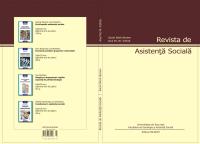Internal versus External Ethnic Identification of Roma: Implications for Social Inclusion in Romania
Internal versus External Ethnic Identification of Roma: Implications for Social Inclusion in Romania
Author(s): Carmen Buzea, Radosveta DimitrovaSubject(s): Social Sciences
Published by: POLIROM & Universitatea Bucureşti - Dept. de Sociologie şi Asistenţă Socială
Keywords: Roma;ethnic identity;internal identification; ethnic markers
Summary/Abstract: The Roma represent the most relevant and sizable ethnic minority across Europe with estimates varying from 10 up to 15 million of people. However, discrepancy in external (ascribed by others) and internal or self‑defined ethnic identification of Roma are largely present in Europe and Romania in particular. We set out to explore internal and external ethnic identification of Romanian Roma by investigating Roma communities from 58 Romanian sites (10 cities and 48 villages), based on data collected from local experts (policemen, teachers, social workers, religious leaders). Results showed that: a) external ethnic identification (identification made by others) is three times higher than the official census data and the extreme poverty is the common characteristic of Roma communities; b) according to local experts, main markers to identify Roma refer to geographic proximity, extreme poverty, poor living conditions and enlarged family size. Implications for social inclusion programs at local and European level are discussed along with directions for future research.
Journal: Revista de Asistenţă Socială
- Issue Year: 2016
- Issue No: 3
- Page Range: 93-102
- Page Count: 10
- Language: English
- Content File-PDF

